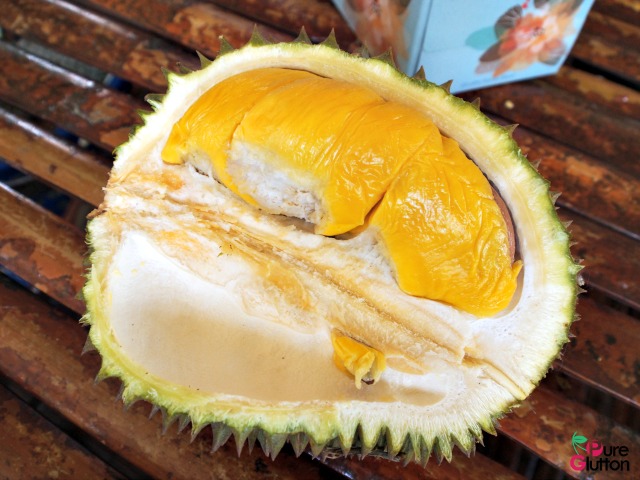The stats are in and 36% of Malaysia’s durian orchards are now producing the creamiest, sweetest breed of durio zibethinus, Musang King.
The agriculture division of the Industries Ministry reports that there are 1.5 million durian trees, spread over a total of 66,000 hectares of the country. Of that, 23,700 are dedicated to the highest yielding strain, in terms of RM per kilo, the Musang King.
The recent spike in the breed’s popularity both at home, and abroad, has resulted in a price surge from what had previously been RM30 per kilo (US$7.5/kg), to currently, fetching anywhere between RM60-RM90 per kilo (US$15-US$22/kg).
Currently, the biggest export markets for the king of fruits, with a delectable aroma of the sweetest rubbish in a flower patch, are Singapore and China. Durian exports accounted for RM74.39 million (US$18.3 million) in 2016.
Of these, exports of pulp and frozen durian paste to China were RM18.02 million (US$4.4 million). The government is currently waiting for approval from China authorities to export frozen, whole durian.”
Chinese investors are even getting in on the action from the ground up: they now own 121 hectares of prime Malaysian durian land. They are particularly fond of the Musang King variety, prized for its creamy, sweet flavor.
Unfortunately, Singapore seems to be getting the short-end of the stick on this deal.
With Chinese willing to pay premium prices, there is now a lack of supply in Singapore, as Malaysian farmers are keen to export to China, where they can fetch double to triple the price. Those durians do make it to market for Singaporeans are more expensive, and of a substandard quality, compared to previous harvests before the Chinese demand took over.
Sorry about that, guys.
The government is now investigating exactly how many Musang King trees are currently planted.




